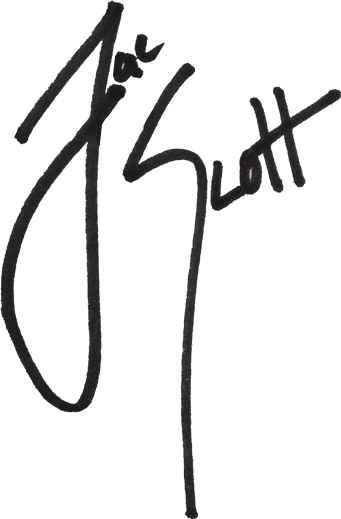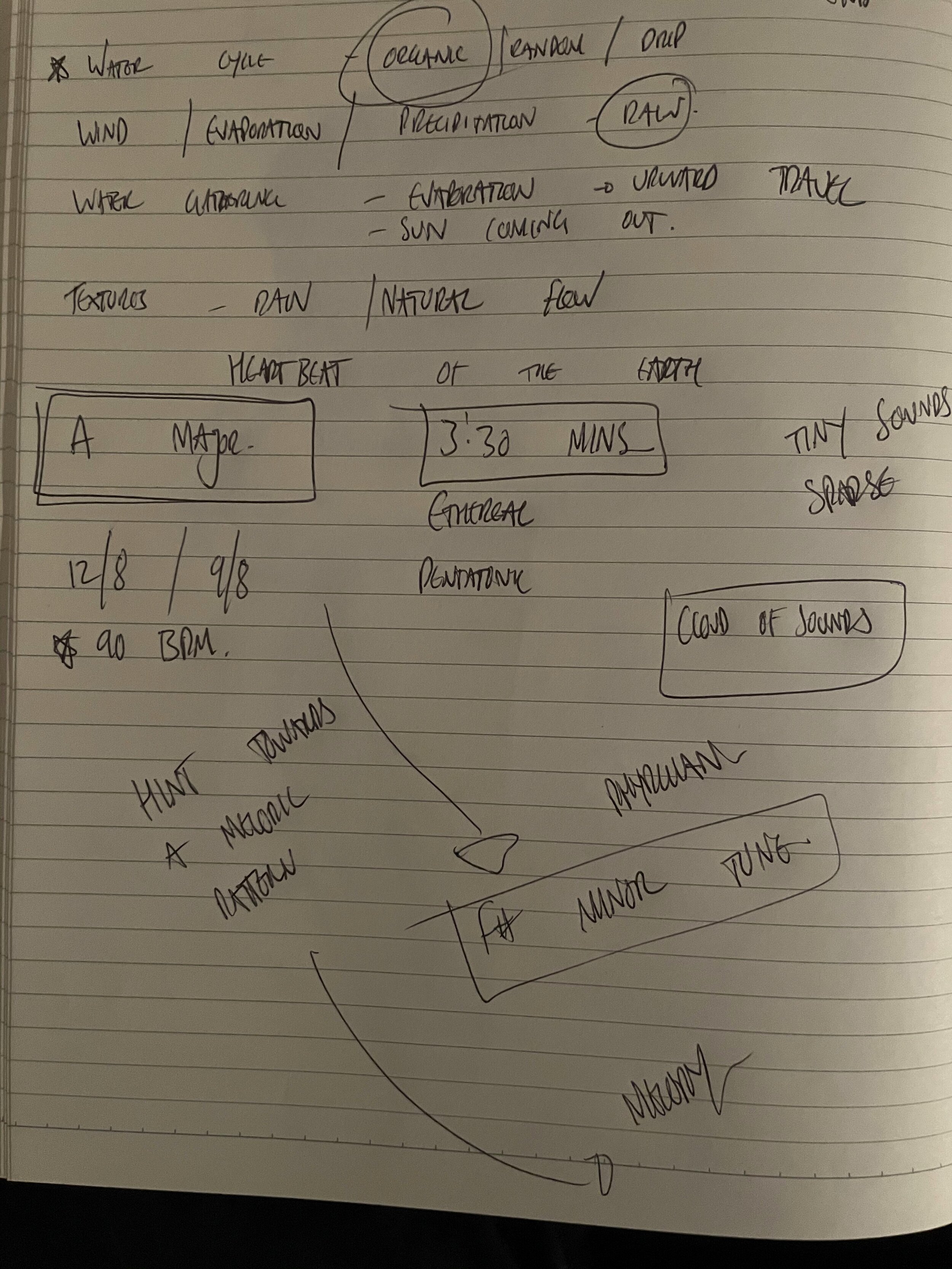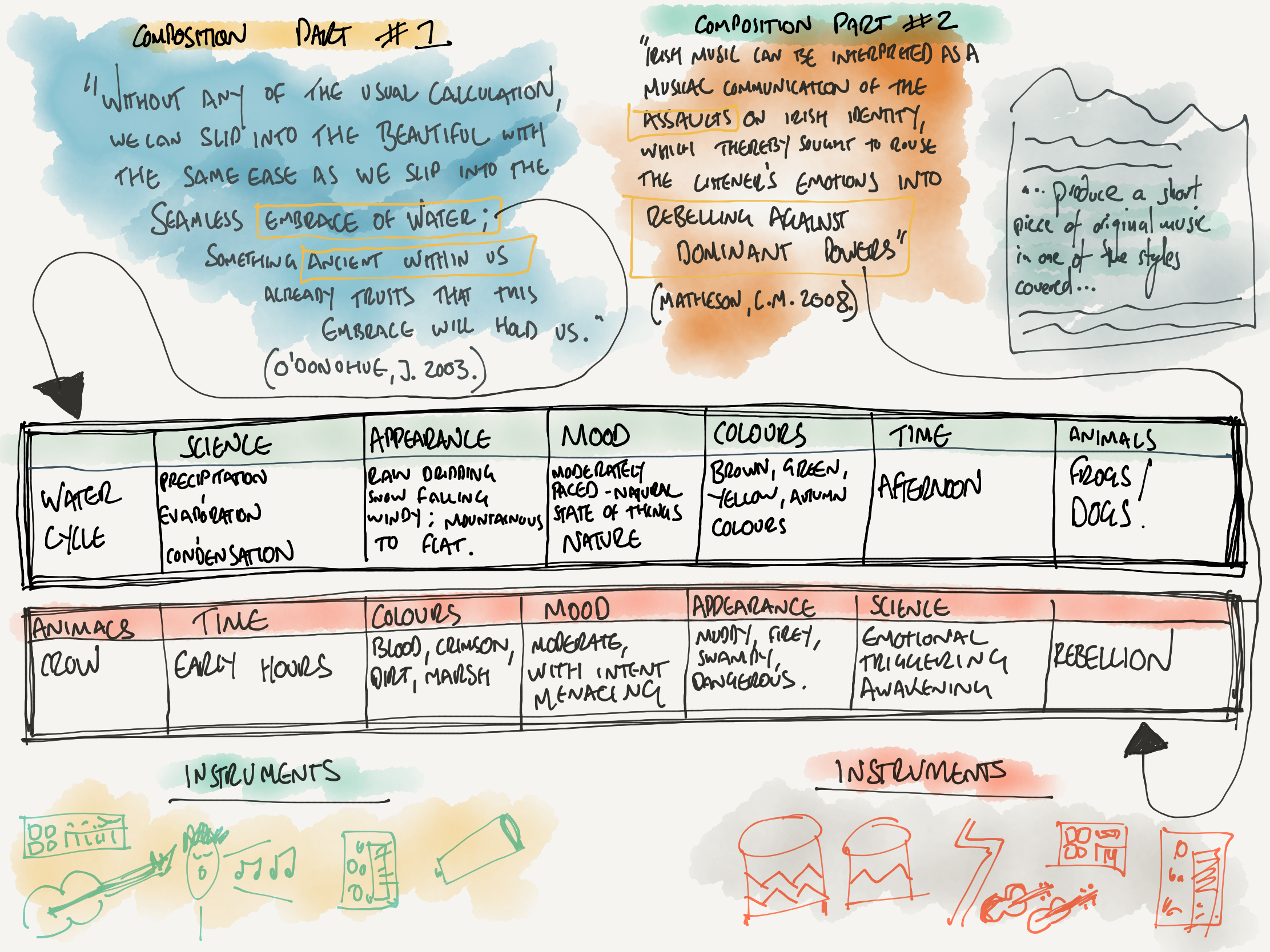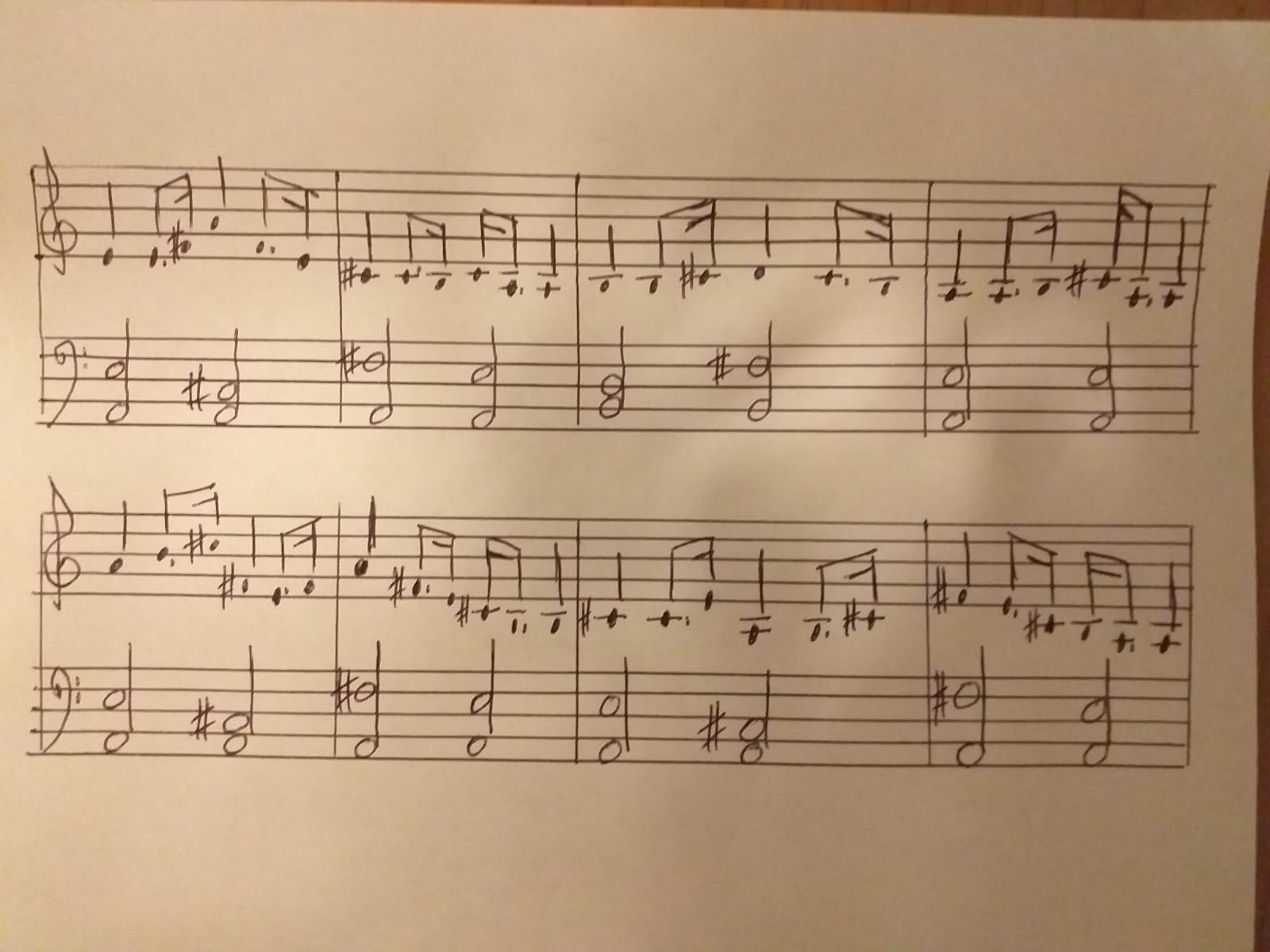Inspired by some of the mythical and mystical discoveries I made in my explorations above, I was interested in devising a piece of music that used Irish and Scottish idioms, though borrowed some percussive elements from across the Celtic Nations throughout the Atlantic Arc. Simon, our lecturer, had introduced the influence of the North African musical idioms on the “Celtic Sound” at some stage in one of the classes when the discussion went off on a tangent, as all good ones do! I sought some more information about the connections to the music of the Middle East and North Africa - and why there may be an oddly familiar sensibility of these sonic signifiers to the Celts!
Charles Acton, the late music critic of the Irish Times, once wrote an extensive article on the subject:
If one has listened for hours in the desert of an evening to Bedouin Arabs
singing narrative epics with as many stanzas as a long aisling (vision poem,
in Gaelic) and then returned to Ireland and heard a fine sean-nós singer
using the same melismata and rhythm, one finds the resemblance between
the two almost uncanny. So too, if one listens to canto jondo (of Spain).
(Acton, C. 2004).
The interconnectedness fascinates me and how it was to some degree the job of the water and the oceans to carry musical idioms to new sites, enabling musical practices and experiments to be shared, borrowed, claimed and ultimately reclaimed. (This still happens today, albeit using a very digital notion of connection and waves!) Geographically, northern regions of Africa and the West of Ireland have the same threatening Atlantic in common, the same cruelly indented coasts, the same peninsular layout. This, the water, was their commonality. The Atlantic Ocean. It is a massive proposition - to negate other common signifiers that connect people to a cause (religion, ethnicity, authenticity, autobiography) and state an elemental factor as the main source that gave the sound its signifiers.
With this intention set, connections identified and the curiosity to delve into the African rhythms as an entry point, I decided that I needed to work collaboratively to achieve the percussive intensity and contrast I was after in my piece of music. I contacted Glasgow based percussionist Thomas Sutherland who agreed to work with me in response to my interests and experimental thought processes.
When beginning this process with Thomas, I was inspired by Judith Weir’s A Ghoil, lig dhachaigh qu m’mathair mi (My Love, Let Me Home to My Mother), which inspired me to consider the connections and connotations between Celtic music, folklore and water. The song revolves around a girl who sings to a water-horse, or a Kelpie, an inhabitant of a loch. I was particularly drawn to the fast phased piano in the second half of the song and the imagery it brought to my mind. This particular section of the song encapsulates the sea and as described in an article I found on her practice and this particular piece:
…the flow of the water is interpreted through the use of fast-running
thirty-two-note quintuplets in arpeggio-like in the piano in the
second half.
(Koay, K. 2016.)
I felt it was important to return to Weir’s music and my curiosity around her perspectives as I began to plot my own musical output. Although her music could arguably be described as ‘not inherently Celtic’ she uses storytelling and narration in her pieces in ways that are interconnected with Celtic music and tradition:
Weir always has a way to “tell”, “narrate” and “describe” stories
in her compositions. Although the music is abstract, it is
nevertheless accessible.
(Koay, K. 2016.)
This notion of a composition being able to hold two opposites; narration and abstraction, as well as drawing on Celtic folklore and its connections to water was my inspiration for this new piece. I wanted to make something that would hold the qualities of water whilst also remaining abstract enough for the listener to make their own narrative within the piece - it had to be accessible! I was inspired by Irish group “The Gloaming” and their wonderful song “The Rolling Wave” which connotes the dances of ocean waves as they are weathered in all kinds of directions. There is distinctively two sections to this piece - plenty of room to move and explore the different timbral directions that waves can roll:
This song has a very distinctive Arabian and North African melodic identity at the outset due to the strings playing in unison an octave apart. I liked the melodic significance of this song but I think it is very imposing. For my composition, I wanted to leave more space and let the rhythm potentially offer its own kind of meditative melodic quality.
The title for my song - Water Song - arrived through my research into its connotations and significance in Celtic folklore. What I find so fascinating is the connection between shape-shifting water creatures and the nature of water itself, which is in continuous flow and ever changing.
Using this as an inspiration and having landed on a simple title, I set about planning how I might go about mapping out the song with two opposing but complimentary sections. Below is an entry from my notebook which documents my initial thoughts on devising something towards this brief, as well as an illustration that denotes the imagery, philosophy and instruments I desired to include in this undertaking:
Initial compositional thoughts.
Water Song - Ideas coming to life.
With the brief to hand and my illustration to compliment, I asked Thomas to devise a set of percussive loops that I could edit and manipulate and well as arranged phrases that were responses to the notion of the “embrace of water” and to “rebel against dominant powers.” I have never worked in this way before - to arrange from a packet of gifted percussive experiments. I have always come at composition from the harmony or the melody so this was a new challenge - a new way into the unknown! Thomas and I decided to send video messages to one another in order to discuss the various technical aspects related to the brief we had devised for one another for this particular composition. The below video offers an insight into our conversations around the rhythmic, harmonic and melodic decision making process we undertook as Water Song came to life:
Following our discussions, I set about arranging the two distinct drum sections into their “embrace” and “rebellion” spaces in the mix and arranged the rest of the track inspired by Thomas’ offerings.
Logic Pro X Session - Final Mixdown
This is by far a non-complicated mix. I did initially include a lot more audio but took a lot out to bring the percussion to the fore. It embraces the space and hopefully this image captures the changeable nature of the waves - from calm to rough, from embrace to rebellion, from awakening to surrendering.
I relied on a lot of synths and manipulated audio to bring the choreographic qualities of the rolling water to life. The drums were very carefully EQ’d so as to leave space for their own melodic qualities. A highlight in the mix for me was the extremely reverberated acoustic guitar which acts as the main pedal holding the A to good effect. I put the guitar through a chorus pedal, old practice amp and recorded the sustained sound that arose! You will hear the initial plucks of the guitar as the song begins.
Below is the final outcome of Thomas and I’s collaboration:
In unpicking this song, I think I have successfully called in the following three technicalities:
Spacious, mysterious drones which give a solid foundation. Synonymous of the misty, Celtic popular music of Enya’s “Only Time” and potentially even Dougie MacLean’s more produced versions of “Caledonia.”
Clear melodic vocal chant which sweeps around the mix like a wave in the water around the stereo image. Using a pentatonic melodic pattern to good effect - inspired by The Gloaming.
The dual role of the drums - melody and rhythm.
To conclude, I wonder how I can make this piece of vocal melody even more synonymous to an Irish inspired melody. I leave myself with the following chart which eliminates the G# making the scale much more of idiomatically pentatonic and closer to the ancient Celtic modality rather than a classically diatonic offering that I originally made.
I look forward to developing this work into the future - though, will await the time when I am next safely able to make my own journey across the waves myself before I reconnect with it.
References:
Acton, C. Taken from Quinn, B. 2004 Article Available From: https://journalofmusic.com/focus/atlantean-irish-irish-musics-north-african-connections. Accessed November 30 2020.
Gloaming, The. 2018. The Rolling Wave. Society Of Sound Music – 93.
Available from https://www.youtube.com/watch?v=Vi0GwF-QNmo&ab_channel=TheGloaming-Topic Accessed October 20 2020.Kheng K. Koay. 2016. Available from: http://www.scielo.br/scielo.php?script=sci_arttext&pid=S1517-75992016000300059#aff1 Accessed November 30 2020.




